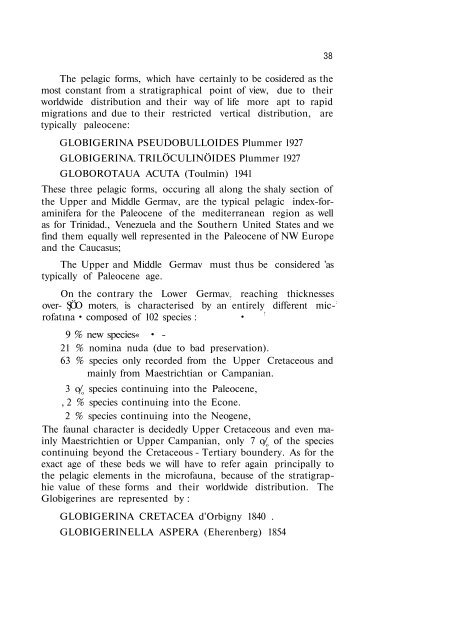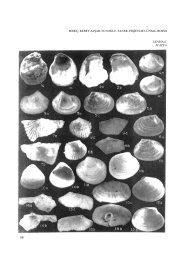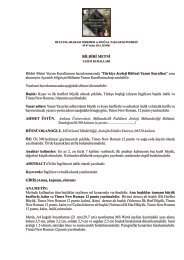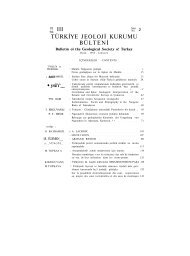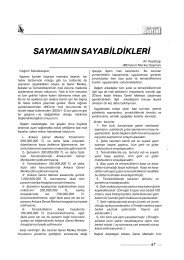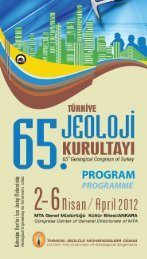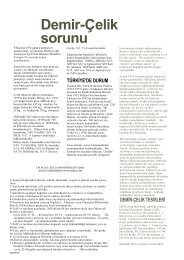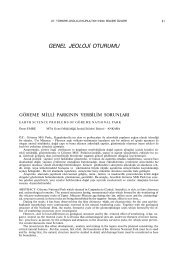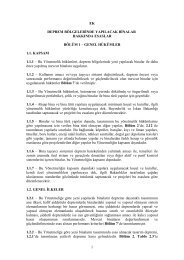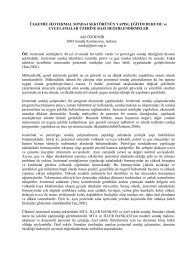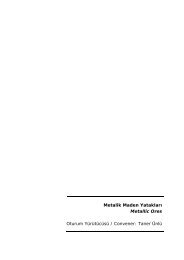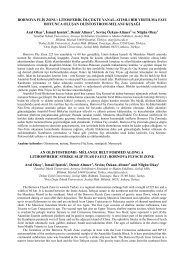Cenub DoÄu Türkiye'de Tersiyer-Kretase'Hududu
Cenub DoÄu Türkiye'de Tersiyer-Kretase'Hududu
Cenub DoÄu Türkiye'de Tersiyer-Kretase'Hududu
You also want an ePaper? Increase the reach of your titles
YUMPU automatically turns print PDFs into web optimized ePapers that Google loves.
The pelagic forms, which have certainly to be cosidered as the<br />
most constant from a stratigraphical point of view, due to their<br />
worldwide distribution and their way of life more apt to rapid<br />
migrations and due to their restricted vertical distribution, are<br />
typically paleocene:<br />
GLOBIGERINA PSEUDOBULLOIDES Plummer 1927<br />
GLOBIGERINA. TRILÖCULINÖIDES Plummer 1927<br />
GLOBOROTAUA ACUTA (Toulmin) 1941<br />
These three pelagic forms, occuring all along the shaly section of<br />
the Upper and Middle Germav, are the typical pelagic index-foraminifera<br />
for the Paleocene of the mediterranean region as well<br />
as for Trinidad., Venezuela and the Southern United States and we<br />
find them equally well represented in the Paleocene of NW Europe<br />
and the Caucasus;<br />
The Upper and Middle Germav must thus be considered 'as<br />
typically of Paleocene age.<br />
On the contrary the Lower Germav ?<br />
reaching thicknesses<br />
over- ŞÖO moters ?<br />
is characterised by an entirely different mic- :<br />
!<br />
rofatına • composed of 102 species : •<br />
9 % new species« • -<br />
21 % nomina nuda (due to bad preservation).<br />
63 % species only recorded from the Upper Cretaceous and<br />
mainly from Maestrichtian or Campanian.<br />
3 o/ o<br />
species continuing into the Paleocene,<br />
, 2 % species continuing into the Econe.<br />
2 % species continuing into the Neogene,<br />
The faunal character is decidedly Upper Cretaceous and even mainly<br />
Maestrichtien or Upper Campanian, only 7 o/ o<br />
of the species<br />
continuing beyond the Cretaceous - Tertiary boundery. As for the<br />
exact age of these beds we will have to refer again principally to<br />
the pelagic elements in the microfauna, because of the stratigraphie<br />
value of these forms and their worldwide distribution. The<br />
Globigerines are represented by :<br />
GLOBIGERINA CRETACEA d'Orbigny 1840 .<br />
GLOBIGERINELLA ASPERA (Eherenberg) 1854<br />
38


